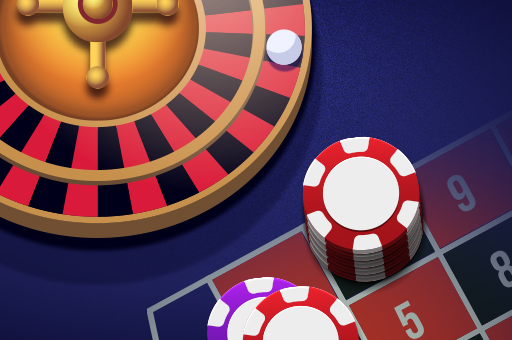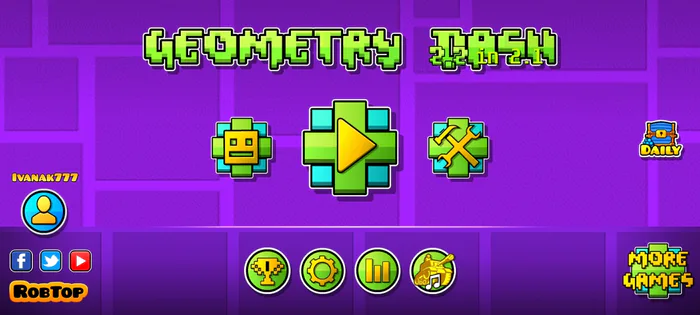Gaming
Unlocking Your Potential in Escape from Tarkov

Escape from Tarkov stands as one of the most challenging tactical shooters available today, demanding skills far beyond basic point-and-shoot gameplay. The learning curve can feel more like a vertical cliff for newcomers, but with the right approach, anyone can improve their survival rates and extract with valuable loot more consistently.
What Sets Tarkov Apart from Mainstream Shooters
Ever wondered why some games just hit different? Tarkov isn’t your average FPS – it’s in a league of its own. The differences are striking when you compare it to mainstream titles:
- Punishing permadeath system that makes every decision matter
- Incredibly detailed weapon modification that affects actual performance
- Player-driven economy that fluctuates based on real supply and demand
- Zero hand-holding or objective markers – figure it out yourself, soldier
- Sound design so precise you’ll start hearing phantom footsteps in real life
“Tarkov doesn’t just test your aim, it tests your mental fortitude,” as my squad mate often mutters before getting domed from nowhere.
Many resources exist to help climb this learning mountain, including communities like eft esp on info-cheats where players share advanced strategies and tips that can significantly reduce the brutal learning period most newcomers experience.
Survival Basics Every Newbie Needs
Listen up, if you’re fresh meat in Tarkov you’ll need these tips to avoid becoming another statistic. I’ve been there – hiding in bushes for what felt like hours because I heard a twig snap somewhere.
- Start in offline mode to learn maps without the stress of losing gear
- Always, always insure your equipment – you’d be shocked how often it returns
- Use quality headphones both in-game and IRL – sound awareness wins fights
- Master one map completely before attempting others
- Find a community – solo play is exponentially harder than having backup
The most crucial advice? Manage your expectations. Death in Tarkov isn’t just common its inevitable. Sometimes it’s fair sometimes it’s a guy who’s been camping the same spot since the raid began.
Movement Mastery: Beyond Basic WASD
Once you’ve got the fundamentals down, it’s time to move like the veterans do. Movement in Tarkov is a sophisticated dance that separates the Timmies from the Chads.
Strafing while looting containers has saved my skin countless times. By moving side-to-side during vulnerable moments, you become a harder target for opportunistic snipers. Learn to point-fire effectively while moving – aiming down sights in close quarters can be a death sentence.
Another technique worth practicing is the quick-peek and pre-fire at common camping spots. You’d be amazed how often this catches even experienced players with their pants down. Remember that your stance affects not just speed but sound profile – sometimes slower and quieter wins the race.
Map Knowledge: Your Ultimate Advantage
I cannot overstate this enough – knowing the maps intimately is possibly the single most valuable skill you can develop.
“A player who knows where they are is dangerous. A player who knows where everyone else is likely to be is deadly,” as the saying goes in the Tarkov community.
What should you memorize?
- All extraction points and their specific conditions
- Player spawn locations (to avoid early-game ambushes)
- High-value loot spawns and their rarity
- Popular sniper perches and choke points
- AI scav patrol patterns and boss locations
This knowledge provides an immense advantage, letting you predict player movement and plan accordingly. I’ve outplayed fully-geared opponents simply because I knew the shortcuts they didn’t.
Community Resources Worth Their Weight in Rubles
Despite its reputation for brutality in-game, the Tarkov community is surprisingly helpful. These resources dramatically shortened my learning curve:
- Interactive map websites with filterable information
- Ammo charts showing penetration values against different armor classes
- Video guides from content creators like Pestily and Deadlyslob
- Discord servers for finding teammates and sharing info
- Market trackers to optimize your hideout investments
These tools provide information that would otherwise take hundreds of painful raid hours to learn through trial and error.
Adapting to Wipes and Meta Shifts
The beauty and frustration of Tarkov is how frequently it changes with wipes and updates. What worked last wipe might get you killed this wipe.
Early wipe gameplay feels completely different from late wipe. In the beginning, everyone’s scraping by with basic loadouts and every piece of loot matters. Late wipe, you’ll face human tanks with meta weapons. Your strategies must evolve accordingly.
When good ammo is scarce, aim for legs instead of trying to penetrate helmets. When certain barter items spike in value, prioritize them in your secure container. The most successful players aren’t necessarily the best shots – they’re the ones who adapt fastest.
Battle-Tested Wisdom from Veterans
After thousands of hours in the trenches of Tarkov, you develop instincts that no guide can teach. Here’s some wisdom I’ve gathered:
- If your gut says someone’s camping extract, they probably are – patience outlasts campers
- The sounds of healing or magazine repacking make excellent bait for aggressive players
- The most valuable loot isn’t worth taking if it means losing everything else
- Never remain stationary after firing – movement is life
“The best gear is the gear you successfully extract with,” my first Tarkov mentor told me. Finding a GPU means nothing if you don’t make it to extract.
Remember that every chad was once a timmy. Each player who head-eyes you from impossible distances started somewhere. The difference? They committed to the learning process that makes this game so uniquely rewarding when you finally crack its code.
Gaming
GGVegas: Your Ultimate Fun Guide to Gaming Glory!

Picture this: It’s Friday night, you’re settled into your favourite chair, and that familiar rush of anticipation courses through your veins as you prepare to test your skills against players from around the world. Whether you’re a seasoned card shark or someone who’s just discovered the electrifying world of online gaming, there’s something undeniably magnetic about the challenge, the strategy, and yes—the thrill of victory. Welcome to the world of GGVegas, where gaming excellence meets accessible fun.
This guide isn’t just another dry tutorial filled with complicated terminology that’ll make your head spin. Instead, think of it as your friendly companion on the journey to gaming mastery. We’re going to break down everything from poker fundamentals to the psychology of bluffing, debunk the myth that winning is all about luck, and explore the diverse gaming landscape that makes this platform such an exciting destination. By the time you finish reading, you’ll have practical strategies you can implement immediately, a deeper understanding of game mechanics, and the confidence to take your gaming to the next level. Ready? Let’s dive in!
Let’s Get Started with Poker Basics
Did you know poker has been around for nearly 200 years, evolving from Mississippi riverboats to glitzy casinos and now to your laptop or smartphone? This evolution reflects its enduring appeal and the timeless strategies that make it such a fascinating game. What makes poker truly special is how psychology meets probability—reading people is just as important as reading cards.
Let’s dive into the basics without making it feel like a math class. At its core, poker is about making the best five-card hand possible or convincing everyone else that you have. Simple, right?
How a Typical Game Flows
The Essential Steps:
- The Deal: Each player receives their cards (the number depends on which poker variant you’re playing)
- The Betting Rounds: Players take turns deciding whether to bet, call, raise, or fold based on their hand strength
- The Reveal: Remaining players show their cards, and the best hand wins the pot
The beauty of playing on the platform is that you can start with low-stakes games to practice these fundamentals without risking your rent money. Various poker variants are available—from Texas Hold’em to Omaha—each with its own strategic nuances that keep things interesting.
Hand Rankings You Need to Know
- Royal Flush: A, K, Q, J, 10 of the same suit (the holy grail)
- Straight Flush: Five consecutive cards of the same suit
- Four of a Kind: Four cards of the same rank
- Full House: Three of a kind plus a pair
- Flush: Five cards of the same suit
- Straight: Five consecutive cards of different suits
- Three of a Kind: Three cards of the same rank
- Two Pair: Two pairs of cards
- One Pair: One pair of matching cards
- High Card: The highest card when you have no other ranking hand
Think of these rankings as a ladder. The higher you climb, the better your chances of winning. However, here’s where it gets interesting: even with a low-ranking hand, you can still win if you play your cards right—literally and figuratively. That brings us to one of poker’s most fascinating elements.
The Art of Bluffing
Let’s discuss one of the most exhilarating aspects of poker: the bluff. Imagine you’re holding absolutely nothing—maybe a seven and a two of different suits (poker players affectionately call this the “worst hand in poker”). However, instead of folding like everyone expects, you raise the bet confidently. Your opponents, convinced you’re holding pocket aces, fold their moderately good hands. You just won with practically nothing. That’s the magic of bluffing.
Remember the 2003 World Series of Poker when Chris Moneymaker (yes, that’s his real name—talk about destiny!) bluffed his way past professional player Sam Farha with absolutely nothing? Moneymaker went all-in on a complete bluff, and Farha, holding a decent pair, eventually folded. That single hand helped Moneymaker win the championship and changed poker forever, sparking what experts call the “poker boom.”
The Psychology Behind Successful Bluffing
Effective bluffing isn’t about lying—it’s about storytelling. Your bets throughout the hand need to tell a consistent story about what cards you might be holding. If you’ve been betting cautiously all game and suddenly go all-in, experienced players will smell something fishy. Yet if you’ve been betting aggressively from the start, that big bet becomes believable.
When to Bluff:
- When you’re playing against fewer opponents (bluffing five people is much harder than bluffing one)
- When the community cards suggest a strong hand is possible
- When you’ve established a tight, conservative playing image
- When your opponent has shown weakness (like checking instead of betting)
When NOT to Bluff:
- Against beginners who might call anything (you can’t bluff someone who doesn’t understand they should fold)
- When you’ve been caught bluffing recently
- When the pot is small (risk should match reward)
- When you’re emotionally compromised
Here’s my challenge to you: Try incorporating one calculated bluff in your next gaming session. Start small, observe how your opponents react, and share your experience in the comments below. Did it work? Did you get caught? What did you learn? The poker community thrives on shared experiences, and your story might help someone else master this crucial skill.
Why Poker is More Than Just Luck
“Poker is just gambling—it’s all luck!” If I had a dollar for every time I’ve heard this misconception, I’d have enough to enter a high-stakes tournament. Let’s clear up this misunderstanding once and for all: while luck plays a role in individual hands, poker is fundamentally a game of skill, strategy, and mathematical probability.
Consider this: if poker were purely luck-based, how do the same professional players consistently make it to final tables in major tournaments? How does someone like Daniel Negreanu maintain a decades-long career earning millions? The answer is pretty straightforward—they’ve mastered the strategic elements that casual players overlook.
The Strategic Elements That Matter
Position Awareness: Where you sit relative to the dealer button dramatically affects your strategy. Playing from “late position” (acting after most other players) gives you more information to make better decisions. Professional players win more hands not because they get better cards, but because they know how to leverage position.
Pot Odds and Probability: This sounds mathematical (and it is), but it’s actually intuitive once you grasp it. If there’s $100 in the pot and it costs you $10 to call, you’re getting 10-to-1 odds. If your chance of making your hand is better than 1 in 10, calling is mathematically correct. Over thousands of hands, making mathematically sound decisions translates to consistent profits.
Opponent Analysis: Great poker players are great people-readers. They notice betting patterns, timing tells, and behavioural cues that reveal information about their opponents’ hands. This psychological element is pure skill, not luck.
The same strategic thinking applies to other games on the platform. When you play blackjack, for instance, basic strategy charts can reduce the house edge to less than 1%. That’s not luck—that’s mathematics and disciplined decision-making. Card counting (where legal) takes it even further, proving that informed strategy trumps random chance.
The Variance Factor: Yes, short-term luck exists. You might lose with pocket aces or win with a terrible hand. Yet over hundreds or thousands of hands, skill inevitably rises to the top. Professional players understand variance and don’t let short-term results affect their long-term strategy. This mental discipline is itself a learnable skill.
Exploring Other Games on GGVegas
While poker might steal the spotlight, the platform offers a treasure trove of other gaming experiences that deserve your attention. Let’s explore some fan favourites and the strategies that can enhance your enjoyment and success.
Blackjack: The Thinking Player’s Game
Blackjack offers some of the best odds in online gaming when played correctly. The objective is simple—get closer to 21 than the dealer without going over. Yet the strategy runs deep:
- Always split aces and eights
- Never split tens or fives
- Double down on 11 (especially when the dealer shows a low card)
- Learn basic strategy charts (they’re not as complicated as they look)
The house edge in blackjack can be as low as 0.5% with perfect basic strategy. Compare that to many other games, and you’ll see why serious players love it.
Roulette: Understanding the Odds
Roulette is straightforward—a ball lands on a number, and you either win or lose. Yet smart players know which bets offer better value. European roulette (single zero) is always preferable to American roulette (double zero) because the house edge is nearly half as much. Stick to outside bets like red/black or odd/even if you want to extend your playing time and enjoy the experience.
Slots: Pure Entertainment with Strategic Elements
Now, let’s delve into slots—the most popular game in any casino, online or otherwise. While slots are primarily games of chance (those random number generators don’t lie), there are still strategic considerations:
Beginner Tips for Slots:
- Understand RTP (Return to Player): Look for games with RTP above 96%. This percentage indicates how much the game returns to players over time.
- Volatility Matters: Low volatility slots pay smaller amounts more frequently; high volatility slots pay bigger amounts less often. Choose based on your playing style and bankroll.
- Bonus Features: Modern slots include free spins, multipliers, and bonus rounds. Understanding how these work maximises your entertainment value.
- Bankroll Management: Set a budget before you start and stick to it. Slots are designed to be engaging, so discipline is crucial.
The beauty of slots is their incredible variety. Whether you enjoy classic three-reel games, elaborate video slots with cinematic graphics, or progressive jackpots with life-changing potential, there’s something for every taste.
Other Games Worth Exploring:
The platform also features baccarat (a favourite of high rollers for its simplicity and low house edge), video poker (combining poker strategy with slot-style gameplay), and various speciality games. Each offers unique entertainment value and strategic depth.
Take Your Skills to the Next Level
We’ve gone through a lot together—from poker fundamentals and the psychological warfare of bluffing to the strategic depth that separates skilled players from lucky ones, and finally, the diverse gaming options that make this platform such an exciting destination.
Here’s what I want you to take away: gaming excellence isn’t about being the luckiest person in the room. It’s about understanding the games you play, making informed decisions, managing your bankroll responsibly, and continuously learning from experience. Whether you’re drawn to the strategic complexity of poker, the mathematical elegance of blackjack, or the pure entertainment of slots, there’s a place for you in this vibrant community.
Your Action Plan:
- Start with one game and learn it thoroughly before branching out
- Practise with low-stakes games to build confidence
- Implement one new strategy from this guide in your next session
- Track your progress and learn from both wins and losses
- Join the community and share your experiences
Now it’s your turn. Put these strategies into action and see the difference they make. And here’s the fun part—come back and tell us about it! Did that bluff work? Did you hit a great hand in blackjack? Did you finally understand why position matters in poker? Drop your stories, questions, and tips in the comments below. The best way to level up your game is by learning from others and sharing your own insights.
Remember, every expert was once a beginner who refused to give up. Your journey to gaming glory starts with a single hand, a single spin, a single decision to play smarter. Let’s make it happen together!
What’s your biggest gaming challenge? Share it in the comments, and let’s solve it as a community!
Gaming
Geometry Dash APK – Full Guide to Download, Features & Installation

Geometry Dash APK is a modified version of the original Geometry Dash game, designed specifically for Android users who want to enjoy this rhythmic platformer outside the Google Play Store. With its addictive gameplay, electrifying music, and high-speed action, this APK version brings all the fun directly to your Android device — even if you’re in a region where the Play Store version isn’t available.
Whether you’re a casual gamer or a hardcore rhythm junkie, Geometry Dash APK is a must-have if you love fast-paced, challenging games.
Click On the Link To Download it thegeometrydashes.com
🔍 What is Geometry Dash?
Before diving into the APK version, let’s understand what Geometry Dash is.
Developed by RobTop Games, Geometry Dash is a rhythm-based action platformer where players control a square-shaped character. The goal is simple: jump, fly, and dodge obstacles while syncing perfectly with the beat of the music.
But don’t let its simplicity fool you — this game is notoriously difficult, requiring impeccable timing and focus. Every level is designed to test your reflexes, memory, and rhythm.
📲 What is Geometry Dash APK?
Geometry Dash APK is the Android Package Kit (APK) file of the game. This version allows users to install Geometry Dash manually on their Android phones without accessing the Google Play Store.
People often choose the APK version for:
- Early access to updates or modded versions,
- Offline installation on devices without Play Store,
- Access in countries where the game is restricted.
The APK retains all original features and offers the same gameplay experience as the official version — without compromise.
🎮 Key Features of Geometry Dash APK
Here’s why millions of players are hooked to this game:
1. Challenging Gameplay
The gameplay is designed around perfect timing. A single mistake means starting over. This makes Geometry Dash frustratingly fun and addictive.
2. Custom Level Editor
Players can create and share their own levels using in-game tools. The community has built thousands of levels, each more creative than the last.
3. Unlockable Icons and Colors
You can customize your square avatar with different icons, trails, and colors unlocked by progressing through the game or completing challenges.
4. Soundtrack Synced Levels
Each level has its own unique music track that perfectly matches the rhythm of the gameplay, making it a unique experience every time.
5. Practice Mode
Want to practice before attempting the real challenge? Practice Mode allows players to place checkpoints and polish their skills.
6. Offline Play
The APK version, just like the original, works without an internet connection, perfect for playing on the go.
Gaming
How to Develop Live Dealer Casino Games: Complete Technical Guide

Live casino technology allow players worldwide to play in real time, giving gamers more realistic and engaging online casino experiences. Live dealer games need current streaming technology, a stable backend architecture, and game logic that can manage high traffic without crashing. As the business grows, online casino game developers are now working on creating systems that seem like genuine tables, real dealers, and real results in a digital setting.
Getting to Know the Basic Structure of Live Dealer Games
Live dealer games function by putting together real-life settings with digital ones. A typical studio has skilled dealers, gaming tables, high-tech lighting, and cameras that can see things from different perspectives. These studios need to be built such that they can record high-definition video without a lot of lag. Live dealer games need on real-time interaction, thus even little delays may make players lose faith.
Many operators think the visual setup is the most important part, but the technology that makes it work is much more important. Advanced sensors or OCR (Optical Character Recognition) must be able to identify every card, wheel, or dice move. This makes sure that the game logic matches what is occurring on the table. This alignment is very important for live casino systems that work.
Picking the Best Streaming Technology
Live streaming is the most important part of making live dealers. Most providers use WebRTC or ultra-low-latency technologies to provide players video without any breaks. These technologies reduce latency and allow instant betting. Developers must provide reliable bandwidth, powerful servers, and thousands of sessions.
To ensure game stability, online casino game developers may deploy load-balancing servers throughout the globe. This keeps feeds from dropping and enables players from different countries play simultaneously. Multi-camera setups can make the experience more immersive by giving you different angles that make the digital space seem like a genuine casino table.
Creating the Logic for the Backend
A powerful backend handles bets, maintains accounts, and pays out winnings for every live dealer game. The system has to keep track of every action, use OCR or sensors to figure out what happened in the game, and update victories right away. It also requires safe APIs to work with payment gateways, CRM tools, and content management systems.
The backend should be able to handle a variety of games, such as blackjack, roulette, baccarat, and poker. It should also enable operators add additional rules or branding features as required. Scalability is quite important, particularly because player traffic might go up a lot during peak gaming hours or promotions.
Making Interfaces for Players
The UI is what makes a live game strong. Players want animations that run smoothly, betting controls that are easy to use, and navigation that is easy to understand. The design of the UI and UX must be basic and the same on both desktop and mobile devices.
Modern live casino solutions also include interactive elements including chat systems, possibilities for tipping, and panels that show the history of games. These elements keep players interested and engaged to the dealer and the table. Touch-friendly interfaces and adaptable controls keep mobile users as comfortable as desktop users.
Bringing together real-time communication
Players may talk to dealers and other players in real time using communication tools. This kind of connection builds trust and makes you feel like you’re in a real casino. To help with this, developers include chat modules, moderation systems, and automatic filters to make sure the space is safe and friendly.
Latency plays a big role here. Developers of online casino games need to make sure that chat messages show up right away and are in sync with the live video stream. Any latency may ruin the experience and make people less interested.
Making sure things are fair and safe
There are tight rules for how fair live dealer games must be. To do this, gear including card shufflers, sensors, and roulette wheel detectors are used together with digital monitoring tools. These mechanisms make guarantee that results can’t be changed and that the game stays fair.
Security is also very important. Developers use encryption protocols, secure media servers, and fraud detection systems to keep transactions and gaming safe. Regular audits by testers from outside the company assist make sure that everything is clear and follows the rules.
Making it better for scalability
Scalability is important as live casino businesses increase. A tiny setup may only be able to accommodate a few hundred people, while bigger ones sometimes need to manage thousands. To do this, developers use cloud architecture, distributed servers, and horizontal scalability.
The system keeps working well even when there are a lot of people using it by adjusting to traffic surges. To better serve regional markets, many operators additionally grow by introducing extra tables, VIP areas, or language-specific streams.
In conclusion
Live dealer casino games need cutting-edge technology, reliable infrastructure, and real-time engagement expertise. The game’s studio design, streaming engines, and backend logic must work together to provide players a smooth and dependable experience. TRUEiGTECH provides specialized tools and development services for operators that want to join this area. These tools and services help create live dealer environments that are scalable, secure, and up-to-date. The solutions are designed to satisfy the higher demands of the global gaming business today, whether you’re establishing a new platform from start or updating an old one.
-

 Finance3 years ago
Finance3 years agoProfitable Intraday Trading Advice For Novices
-

 Gaming3 years ago
Gaming3 years agoSubway Surfers Unblocked | Subway Surfers Unblocked 66
-

 Internet3 years ago
Internet3 years agoWelcome to banghechoigame.vn – Your One-Stop Destination for Online Gaming Fun!
-

 Gaming3 years ago
Gaming3 years agoMinecraft Unblocked Games 66 | Unblocked Games Minecraft
-

 Gaming3 years ago
Gaming3 years agoGoogle Baseball Unblocked | Google Doodle Baseball Unblocked 66
-

 Internet2 years ago
Internet2 years agoPremium Games Unblocked: Unleash Your Gaming Potential
-

 Gaming3 years ago
Gaming3 years agoTunnel Rush Unblocked | Tunnel Rush Unblocked 66
-

 Gaming2 years ago
Gaming2 years agoRocket League Unblocked – Rocket League 2D Unblocked


























